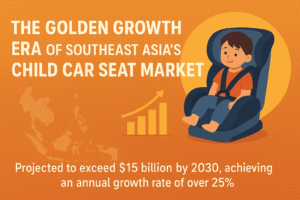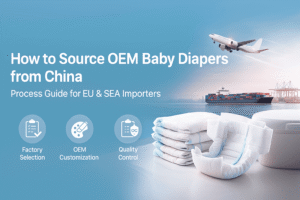In recent days, in response to Trump’s abuse of tariffs, the United States is carrying out a “self-help movement”:
In addition to stepping up stockpiling, American people have also taken to the streets to protest Trump’s tariff policy;
A group of well-known people from the technology and financial industries have also formed a group to go to Trump’s Mar-a-Lago Manor, hoping to have a common-sense discussion with Trump on his comprehensive tariffs.
However, in the face of the calls from all walks of life in the United States, Trump responded like this:
This is an economic revolution, and we will definitely win. Although it is not easy, we must hold on, and the final result will be historic.
The word “hold on” can reflect that the pain of this “risky chess move” by the United States is not small.
So why does the Trump administration still want to risk the world’s disapproval and fight a tariff war?
Several sets of data can explain the problem.
In recent days, the U.S. stock market has collapsed. From the 3rd to the 4th, in just two days, the U.S. stock market evaporated more than 6 trillion US dollars. Last week, the Dow Jones Industrial Average fell 7.82%, the S&P 500 fell 9.08%, and the Nasdaq fell 10.02%.
Among them, the market value of the “Big Seven” in the US stock market, including Apple, Microsoft, Amazon, Tesla, Meta, Nvidia, and Google, lost a total of 1.8 trillion US dollars.
From a historical perspective, Trump does have some “experience” in facing this situation.
Take 2018 as an example. This year, the US stock market has experienced at least three major fluctuations, each of which was related to the Trump administration’s policies at the time:
In February 2018, the Dow Jones Industrial Average fell 1,175 points in a single day, setting a record for the largest single-day drop in history at the time.
From the end of September to the second week of October 2018, the three major US stock indexes fell by as much as 10% from their highs, and the stock prices of technology companies such as Apple and Amazon fell sharply.
In December 2018, the Dow Jones Index fell 653 points in a single day, and the S&P 500 Index was close to the bear market area.
The Trump administration’s moves have also caused concerns in the U.S. capital market.
For these fluctuations, the Trump administration’s rhetoric at the time was similar to today’s – the then White House spokesman mentioned, “The president is focused on the foundation of the U.S. economy, and the U.S. economic foundation is still extremely strong.”
In other words, there is no impact. But is this really the case?
Take the stock market crash in December 2018. This was the worst stock market decline during Trump’s last term, except for the impact of the epidemic.
Tan Zhu used big data to count the discussions of the stock market crash in media and social media across the United States, and found that the discussion in California was very hot.
In California, there is a special group – technology companies. In particular, California’s technology startups have the highest financing levels in the United States.
For this group, the stock market crash in December 2018 was not an easily repairable shock, but a devastating blow.
According to statistics, many California technology companies that originally planned to go public at the end of 2018 or early 2019 had to postpone their listings at that time.
These companies were originally highly anticipated by the US capital market, and Uber is one of the representatives.
In 2018, the US capital market believed that Uber’s listing would be the largest IPO on US exchanges since 2014.
But in mid-2019, after Uber finally went public, its performance was always reluctant, and some voices emerged that Uber and other companies were “almost worthless.”
From the example of Uber, we can see that this collapse has deeply hurt the US technology industry. This damage is long-term and even irreversible.
Similar situations actually occurred in industries directly related to the tariff war.
During Trump’s first term, he took the initiative to provoke trade frictions with China, and China chose to impose a 25% tariff on US soybeans and other commodities as a countermeasure.
That year (2018), US soybean exports to China plummeted by about 70%. As a result, US soybean exports plummeted by about US$4 billion that year, and soybean futures prices also fell to the lowest level in 9 years. In 2020, US soybean exports rose to $25.5 billion, exceeding the level before the trade war.
Judging from the book data, the impact of the additional tariffs can be “eliminated”. In other words, if we look at some data indicators with a “long-termist” perspective, the impact of tariffs does not seem to be unacceptable.
In fact, this is also the reason why Trump and his team emphasize “forbearance” – the recovery of soybean exports seems to be an example.
But under this set of data, there are some data that others have not seen:
In 2018, the farm bankruptcy rate in six Midwestern states in the United States rose by 30%, and many farmers believe that they are experiencing the “toughest time”. In 2019, this trend did not ease. That year, the US farm bankruptcy rate rose by 20%.
From decline to recovery, the data is back, but the lives of many Americans are not back.
This also means that although the scale of the industry has not changed, a group of people have lost the opportunity to participate in work forever. In this process, large business owners have a strong ability to resist risks. They will swallow up some small participants, which in disguise undermines fair competition in the industry.
Such examples are more obvious in the manufacturing industry. In fact, the Trump administration has a more complete narrative on using tariffs to solve manufacturing problems:
Adding tariffs will increase the cost of foreign goods entering the US market. As a result, both American and foreign companies will come to the United States to invest and produce, which will drive employment and cultivate more industrial workers. At that time, the US manufacturing industry will be rebuilt, the problem of “hollowing out” of the US economy will be gradually solved, and the “Rust Belt” will no longer be “rusty”.
Trump has always wanted to promote that this approach is effective:
In March 2018, the Trump administration announced a 25% tariff on imported steel. After the tariff was implemented, the reduction in imports led to an increase in domestic steel prices in the United States. That year, the book data of US steel companies were very good-US Steel’s net sales rose from US$12.25 billion in the previous year to US$14.18 billion.
US Steel also announced the restart of its Illinois plant. According to statistics, US steel mills added 4,800 jobs between March 2018 and March 2019.
Steel companies are getting better, the steel industry is getting better, factories are restarting, jobs are increasing, and the local economy is boosting… It sounds like everything is developing according to the “script” announced by the Trump team.
But what the Trump administration did not tell is the second half of this story:
The rise in steel prices has led to rising costs in industries such as automobiles, machinery, and construction. According to statistics, in 2018, steel and aluminum tariffs caused the U.S. downstream manufacturing industry to lose 75,000 jobs.
At that time, the U.S. media reported the story of an American company. The company is called “American Barrel”, which is the only stainless steel beer barrel manufacturer in the United States. For many years, the company has been using domestic steel in the United States. But the emergence of tariff policies has made them unable to afford American steel.
In order to cope with the increase caused by tariffs, the company had to lay off one-third of its workers to maintain operations.
The U.S. media used a very vivid sentence to summarize it:
Trump’s steel tariffs protected 140,000 workers employed by steel manufacturers, but these tariffs also punished 6.5 million people in various industries that use steel as raw materials.
In fact, tariffs did not “protect” the U.S. steel industry.
By 2023, U.S. Steel announced that it would indefinitely shut down its Illinois plant;
By 2024, due to continued losses in recent years, steel production and stock market value are far behind other similar American companies, and U.S. Steel is almost sold to Nippon Steel Corporation.
The plight of the U.S. steel industry is the result of multiple factors. These are the facts that the Trump administration did not tell when it promoted its tariff policy.
The pain that tariffs will bring to the American people is not only reflected on the books. Justin Wolfers, professor of economics and public policy at the University of Michigan, gave such an example:
In 2018, Trump’s tariff policy caused the price of washing machines to rise by nearly $100, so many families chose to continue using their aging machines, but this brought a series of new costs-the noise of aging machines, clothes with poor drying effects after washing, and higher water and electricity bills. The total cost of tariffs is not just the amount of money spent from your account, but also the decisions they force you to make, which will trigger new costs.
He concluded that tariffs will fundamentally reshape American life.
The economist did not analyze in detail how the economy will be reshaped. If it is just to endure the noise, if it is just to wring out the clothes one more time, I think the American people can still accept these. But if it is other changes, can the American people still accept it?
Whether it is the protests of the American people, the fluctuations in the numbers of the economic barometer, or the ups and downs of industry indicators, this storm is from the outside to the inside, involving all aspects of the US economy. The storm has just begun.













